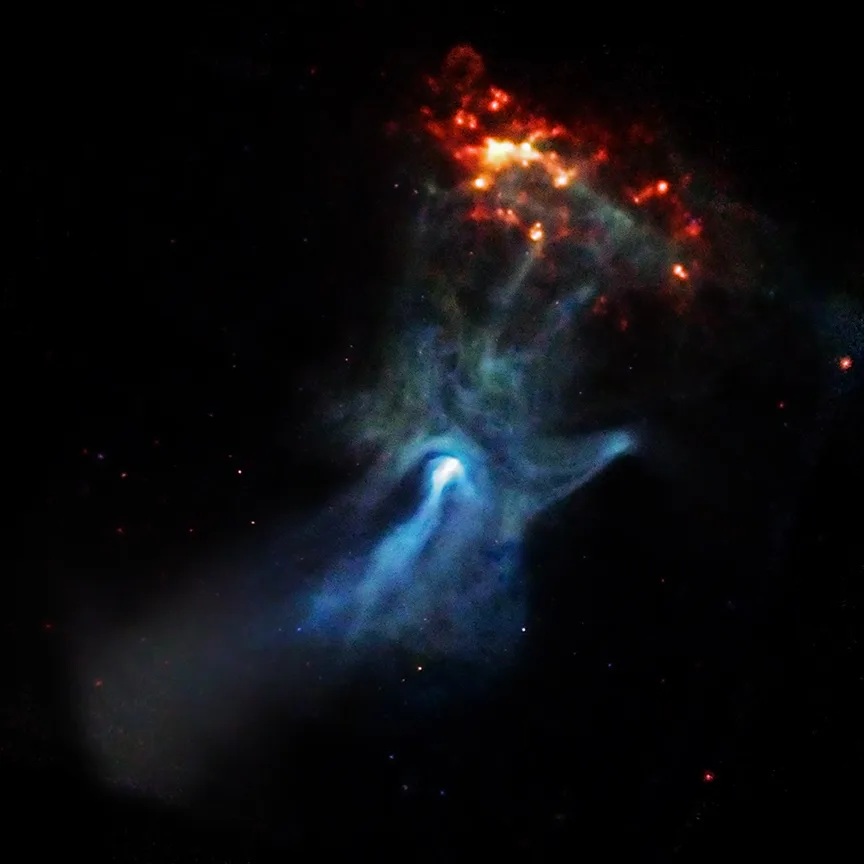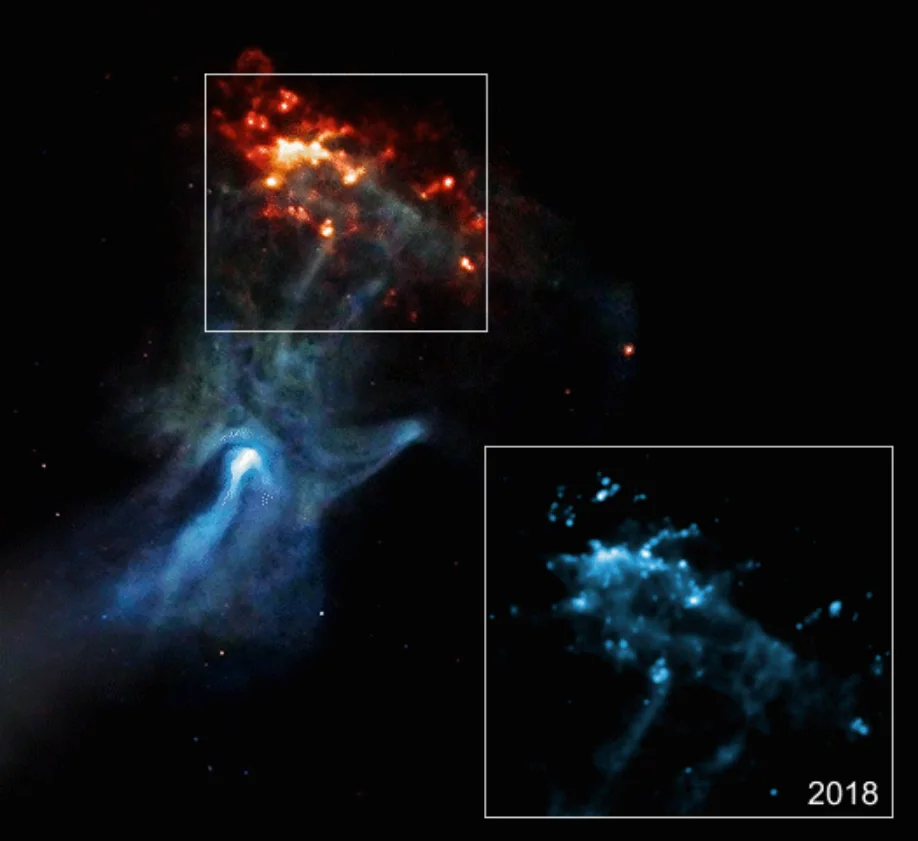
New views of spectral 'cosmic hand' show it reaching out into space
The latest images of this vast supernova remnant reveal that it is slowing its expansion after hitting a wall of surrounding gas.
Thousands of light years from Earth, a giant spectral hand appears to reach out from the death of a star. Now, astronomers have captured new views of this scene, revealing fresh details about this expanding supernova remnant.
Scanning the cosmos with telescopes, astronomers have provided us with truly awe-inspiring views of the universe. With so much to observe and so many curiosities to explore, it's something of a rare treat when they return to a particularly fascinating object. It's even more special when these repeated views reveal the object moving through space.
One such object is the supernova remnant known as MSH 15-52.

This image, first released in 2009, depicts the supernova remnant MSH 15-52, with the pulsar PSR B1509-58 (the remains of the star that produced the supernova) located at the bright spot in the "palm" of the hand. Credit: NASA/CXC/SAO/P.Slane, et al.
Located nearly 17,000 light years away, this expanding cloud of gas and dust is the result of the death of a massive star. The bright spot in the palm of the 'hand' is the location of the pulsar, named PSR B1509-58, left behind after the supernova. The light from this explosion is thought to have reached Earth around 1,700 years ago. So, the remnant has had plenty of time to expand into the space around it. A bizarre aspect to this is that the shockwave driving the cloud's expansion has shaped it into what appears to be a giant spectral hand.
More recently, in 2017 and 2018, a team of astronomers from North Carolina State University used NASA's Chandra X-ray Observatory to revisit this remarkable scene. The study based on their observations was published in The Astrophysical Journal Letters on June 1.

This updated view of MSH 15-52 includes an inset of the region within the square, near the 'fingertips' of the 'hand' that was captured in 2018. Credit: NASA/SAO/NCSU/Borkowski et al.
By taking new observations, they compared these with previous captures — from 2004 and 2008 — to show how the cloud is expanding. They also showed how its interaction with another gas cloud, known as RCW 89 (located at the 'fingertips' of the 'hand'), is affecting its motion.
Use the slider below to flip back and forth between the 2004 and 2018 views of this region of space. Pay careful attention to the small red boxes to see the most apparent motion of the cloud.
According to NASA, the features in this view are moving at over 14 million kilometres per hour. Some are moving even faster, at speeds of over 17 million km/h.
The fixed squares (in red) "enclose clumps of magnesium and neon that likely formed in the star before it exploded and shot into space once the star blew up," NASA said in the press release.
"While these are startling high speeds, they actually represent a slowing down of the remnant," NASA explained. "Researchers estimate that to reach the farthest edge of RCW 89, material would have to travel on average at almost 30 million miles per hour [48 million kilometres per hour]. This estimate is based on the age of the supernova remnant and the distance between the center of the explosion and RCW 89. This difference in speed implies that the material has passed through a low-density cavity of gas and then been significantly decelerated by running into RCW 89."
The study of this supernova remnant may shed light on how different stars behave as they "live" through their final moments. Comparing what they are seeing from MSH 15-52 to other remnants — both younger and older — the similarities and differences they see can provide deeper insights into the workings of the universe.











